Shaken Not Stirred
Our mission is to educate ourselves and others on the importance of maintaining cultural identity, celebrate cultural diversity in the United States, and advocate for equal opportunity for all.
GOAL 1: EDUCATE
Our cohort’s first goal was to educate ourselves and others in our community about the value of multiculturalism in America and the importance of maintaining a connection to our cultural heritage. The project we used to achieve this goal was with perhaps the most universal, yet most diverse symbol of cultural diversity: food. We each reflected on our own cultural backgrounds, found a food that resonated with it, shared it with others, and started conversations with them about not only our own cultures, but cultural diversity as a whole.
CATHY
I am a second generation Chinese American. When I was growing up, my parents emphasized the importance of maintaining my cultural roots. But as a child inundated with mainstream American culture in a relatively affluent suburb in Texas, I never quite embraced my Chinese heritage as much as I now realize I should have. I felt like I was constantly navigating a space between the two aspects of my cultural identity, Chinese and American, and not quite understanding how the two could coexist. Food was one instance of this subconscious rejection of Chinese culture. I was not a fan of Chinese food growing up. I insisted on my parents cooking American food and taking our family to American restaurants. However recently, food has been one major way I’ve been making an active effort to reconnect with my Chinese roots.
The dish I made is a Chinese classic: egg tarts or “dan ta” in Mandarin. The recipe is simple: a buttery homemade flour dough filled with an egg custard mixture. I shared this dish with several people. One in particular was a graduate student from Nigeria that I am working with this summer. We had a very insightful discussion about not only our respective cultures but the idea of multiculturalism in the US today. She explained that she believed the best model for multiculturalism is to maintain the great parts of your cultural heritage while simultaneously embracing those parts of the American culture. Overall, I found this process educational, not simply for learning a recipe that ties back to my Chinese roots, but more so for inciting great conversations about food, culture, and the food culture in America today.
ILINA
I am a first generation Bulgarian Canadian. I immigrated with my parents when I was only 2 and a half. It’s been a rollercoaster figuring out my cultural identity. In Canada I am viewed as the Bulgarian, in the US people see me as Canadian, and in Bulgaria I’m the one speaking in an American accent. However, since my family only speaks Bulgarian at home, I identify strongly with my Bulgarian heritage. One of my favorite things to do for the family is to cook ‘banitza’. Since ‘banitza’ is one of the only things I know how to cook, I’m very good at making it and I’ve become the designated ‘banitza maker’ in the family.‘Bantiza’ is a Bulgarian dish made of phyllo pastry, eggs and feta cheese, and it is often accompanied by yogurt or a yogurt drink called ‘ayrian.’ During New Year’s, we put small fortunes between the layers of phyllo dough and everyone gets a fortune for the New Year in their slice of ‘banitza.’ This is one of my favorite Bulgarian traditions and I thought this would be the perfect opportunity to share some of my heritage with the community.
I made some ‘bantiza’ and shared it with all my housemates, another intern at work and a couple friends living at Rice this summer. Everyone enjoyed the dish and I was very excited to tell them about the associated New Year’s tradition. I found that talking about food is an excellent cultural conversation starter. People are open to hearing about your cuisine and once they taste a piece of your culture, they are very enthusiastic to share their own cuisine with you. Just by sharing some of my ‘banitza,’ I learned a little about Native American cuisine, for example. Because of this project, my friends/housemates and I started planning a potluck for the beginning of the school year where we would have ‘banitza’ with fortunes inside and everyone would also bring a dish from their own culture – that has been my favorite outcome of this project. It goes to show how one person’s story can cause a ripple effect and encourage others to share their stories/backgrounds too.
LISA
I’m a second generation Japanese American, or “Nissei” in Japanese. It’s hard to hold onto my roots because many Japanese cultural values directly conflict with American ones; for example, American culture discourages the Japanese cultural value of maintaining group harmony (“wa”) and instead encourages competitiveness and being unique/special. Even though it seems like blending into the group can be perceived as a weakness, I believe this Japanese value can add a lot to an organization. This collective “team spirit” is one reason Japan could rebuild its nation after surviving the world’s only example of atomic warfare. By celebrating my cultural value of maintaining group harmony/teamwork and viewing it as a strength instead of a weakness, American society can deeply benefit from my contributions without whitewashing me.
I shared ramen at a local ramen shop with my brother and his girlfriend. More than just a cheap college student staple food, ramen is actually a wholesome dish of noodles in a broth that can range from fish-based or miso. In Japan, each region has its own special, distinct way of preparing ramen.I started the conversation by emphasizing the effect of my culture on the way I interact with others and what perspective I offer. As a Japanese American, I feel much more comfortable working in teams than working independently. However, this does not make me less of a leader; as a leader I need to take the initiative to champion good ideas for the group to pursue. I also questioned out loud what it means to have the stereotype of a “model minority” and opened the conversation up to a discussion about their thoughts on the importance of cultural diversity.
I asked my brother if he cares about cultural diversity when hiring people for his company. He says the most important thing to avoid in a company is groupthink. Cultural diversity is a way to prevent groupthink. A different culture offers a different way of approaching problems. My brother doesn’t hire based just on nationality, but on general upbringing–within an ethnicity, people can have personal culture as well.
My brother’s girlfriend brought up gentrification, or the gradual pushing out of a lower class group or minority out of a part of a city by a higher class group moving in. In San Francisco, the Latino neighborhood has undergone gentrification in the last decade; what used to be a predominantly Mexican neighborhood has become gentrified by white artists. Instead of celebrating culture, there is a distinct segmentation between the old tenants and new tenants. As I walk around San Francisco, I realize that instead of coexisting, ethnic groups tend to stick together. Is it enough to appreciate cultures from afar, or risk gentrification or cultural assimilation by immersing yourself in others’ cultures?
Although this activity was intended to educate myself and others on each other’s cultures, the discussion mostly focused on the overall process of championing cultural differences in workplaces or throughout the city. I learned that the balance between celebrating culture and encroaching upon it is difficult. When artists flocked to the Mission District in San Francisco for inspiration, they unintentionally pushed out the cultural group that that neighborhood was known for. How do you celebrate the Mexican culture of the Mission if by moving there, you are ultimately raising rent prices and make it unaffordable for that ethnic group to live there? This conversation was very valuable in educating me about the big issues surrounding cultural diversity and celebration.
GREG
I am 3rd Generation Mexican-American. I grew up the oldest of four and had a massive extended family. With such a large family, every gathering included tons of food, noise and excitement! One of my fondest memories was of playing games with all of my family late into the night. We loved games like Scrabble, Yahtzee and Pictionary. But, perhaps my favorite game to play with the family was ‘Loteria’, which is a traditional Mexican Bingo game that substitutes numbers and letters for colorful spanish drawings with spanish labels. It was an opportunity for my Abuela, who did not speak much english, to teach us spanish words and share with us a game that she had played growing up.
So, instead of making a dish, I brought ‘Loteria’ cards and hoped to share this treasured game with my roommates. Two of them actually share my Hispanic background and were very familiar with the game! Everyone else picked up the bingo-like game extremely quickly. We had a blast teaching those who did not speak much Spanish how to pronounce the various terms and had a good laughs at some of the funnier cards like ‘chalupa’ and ‘borracho’. The game gave us an opportunity to discuss unique aspects of our hispanic and other backgrounds. In particular, one of my roommates shared stories of their mother’s house, which is always seemingly 100 degrees because of all of the cooking, and even to this day she can describe almost every aspect of her grandma’s kitchen. This discussion turned into funny stories about Hispanic grandparents, from always keeping the house way too warm to not being able to deal with modern technology. We had a blast playing and learned a lot about not only how similar each one of our backgrounds are, but also learned a lot about the many differences between Hispanic cultures that tend to be kind of ‘lumped together’.
I took several key points out of this activity. First, I learned that common culture is something that can serve as a powerful tool to unite people. However, it is important not to use common culture to isolate a group from another. Just because my experiences might be more similar to the other Hispanics and this gives us a lot of common ground to talk about, does not mean that I should neglect to learn about the experiences of others not as similar. Culture can be a powerful and unifying force, but that can sometimes have negative effects. The goal of our group is to create a ‘salad bowl’ dynamic that celebrates all different cultures and fights assimilation into one culture. Having pride in one’s own background should not come at the expense of learning more about other backgrounds. Today was not only enjoyable for me and the other Hispanics to reflect on our own culture, but I think it also proved enjoyable for others to learn more about our upbringing and compare and contrast their own backgrounds.
SAHAR
I am a second generation Indian American. I have grown up with three siblings, a large extended family, and friends in my community who share a similar background as me, so I have always been in touch with my culture. Despite being surrounded by American influences, I try to maintain my cultural identity. I grew up speaking a traditional language, wearing traditional clothing at cultural events, and eating Indian food at home. Although I do not know how to cook many Indian dishes, I am trying to learn so that I can carry on this part of my culture with me. I decided to make samosas. The process of making samosas takes, as it requires intricate folding and filling. Samosas can be made with different fillings and spices, based on what region of the Indian subcontinent the recipe originates, and they can be filled with meat or vegetables.
I shared samosas with my friends living in Houston this summer. We come from diverse backgrounds, including India, Peru, Mexico, and America. One of my friends had never eaten samosas before, so she was excited to try them. Another friend noted that samosas are a little similar to empanadas from his own culture. We talked about traditional food from our own cultures. One of my friends said that she didn’t know where in Europe her family was from. Her family had been in America for so long that she didn’t associate herself with any culture besides American. We encouraged her to find out what her original background was so that she could learn more about her heritage.
This experience was great for starting conversations about culture and origins to explore more about each other’s backgrounds. Although we all know about food from other cultures, as food is readily accessible at diverse restaurants in Houston, we don’t know much about other aspects of culture, like traditions and values. Starting and continuing conversations like these are important to educate others and promote cultural awareness.
After reflecting upon our experiences sharing food with others and discussing cultural diversity, we realized that our own connection to our heritage needs some exploring. Within one ethnic group, we develop our own “personal” culture which differentiates our perspectives and experiences from someone else’s. It brings to attention how important it is to bring this dialogue back to our own families–learn what the family recipes are, reflect on fun traditions and its significance, and observe the quirky habits of our grandparents in order to get the complete picture of our own cultures.
*****
GOAL 2: CELEBRATE
Our cohort’s second goal was to celebrate cultural diversity in our communities by taking part in a cultural event. All of our members experienced a cultural dance tradition by attending a show in Houston or San Francisco. Through this, we were able to learn the values of the culture through the narratives, costumes, dance movements, and forms.
HOUSTON:
The Houston members of our cohort went to a Bollywood dance theater production at the Miller Outdoor Theatre called Karma: The Wheel of Life. The show was performed by a local dance group from an Indian dance studio in Houston. Dancers ranged in age from young children to adults. The performance was produced by India House, a center which houses organizations in Houston that provide discounted services and programs to the Indian and neighboring communities, including cultural, language learning, education, immigration, medical, legal, and recreational services. Its mission is to unite cultures, create bridges, and serve the community by bringing resources, education, services, and Indian culture to Houstonians. The mission of India House fell closely in line with our cohort’s mission of maintaining identity and traditions within a cultural community as well as sharing them with others in the larger surrounding community. While the organization values their culture and ethnic heritage, they strive to engage with a diverse array of Houstonians and welcome all backgrounds, and they certainly fit right into our message of ‘celebration not assimilation”.
It was interesting to look around and examine the crowd of people that attended the event. The venue was packed and almost every seat was full. While many of the audience members were Indian, the crowd was actually very diverse and consisted of many different ethnicities. It was awesome to see families of all colors and ages learning more about a culture that may have been very different from their own. Many members of the Houston community came out to form a diverse, collective whole to experience and celebrate a beautiful and unique culture. This was another prime example of the materialization of our vision of “celebration, not assimilation.”
The premise of the performance also emphasized this concept. The narrative followed two couples, one in India and one in America, who met through dance. The two storylines emphasized the importance and impact of the everyday actions and choices that shape and create our life paths. One point of great interest was the story involving a girl who immigrated to America to pursue her dream of learning at an American dance studio. We saw that she never let go of her cultural roots, but simultaneously embraced American culture as well. Dances incorporated elements of both hip hop and Bollywood for a spectacular visual and musical fusion of cultures. We learned about many aspects of Indian culture from this performance. The performers wore traditional clothing (like sarees) and more modern outfits, showing how both old and new aspects of Indian culture are integrated into everyday life. This demonstrates our vision of celebration, as both Indian clothing and Western clothing are a part of their lives and their Indian culture is not lost in America. The importance of family in Indian culture was also highlighted in this performance as the two families celebrated major life events with their children and extended family. Family unity and harmony are integral in India’s collectivist society.
From this performance, we were reminded of the importance of cultural expression to teach others about different cultures and to stay in touch with our own cultures. Cathy, Greg, and Ilina were able to learn new things about Indian culture, while Sahar was able to reaffirm her Indian heritage and explain aspects of Indian culture to others. We were all able to appreciate the diversity in Houston, and we hope to continue learning more about the different cultures that make up the Houston landscape.
SAN FRANCISCO:
I went to the last weekend of the 37th Annual San Francisco Ethnic Dance Festival at the Palace of Fine Arts to watch bharatanatyam dance and Hawaiian hula dance. I invited my friend I met from last summer, Ramya, and her friend Deepika because I knew they would appreciate watching this cultural dance show; Ramya dances bharatanatyam on a team at Penn State, and Deepika tried bharatanatyam as a kid until she switched to flamenco. Before the show, we discussed our identities as Asian Americans; Ramya said she feels pretty connected to her Indian roots through bharatanatyam dance and her Hindu religion. It made me realize how important it was for San Francisco to have an ethnic dance festival to showcase cultures around the world. Without this performance outlet, people like Ramya wouldn’t be expressing their culture and would lose that aspect of their roots.
I was surprised at how much dance revealed about the culture it originated from; bharatanatyam’s disciplined control of intricate foot/eye/hand movements and balance mirrored the controlled, extreme discipline the Indian culture is known for. The fact that the dance was a story in Hinduism shows how important their religion is to the culture. Their uniformity in costume and movements contrasted so much by the impromptu Ghana dance troupe parading to the stage in jovial chant during intermission. The Ghana dancers varied in clothing, gender, and age and while the drumming was to a specific beat, more emphasis was placed on expressing happiness and community than accuracy and precision. I deduced that family, togetherness, and participating in community were values of Ghana culture. The leader even referred to his dance troupe as “the village” and “family”! Lastly, the Hawai’ian dance company performed and I deduced that native Hawai’ians value nature and the environment from their costumes. A seaweed grass crown and necklace hung on both the men and women, and the women’s skirts were a fresh green like the lush landscape in Hawai’i. Women’s movements were delicate, light, and airy while the men’s movements were warrior-like and sharp. Maybe this suggests that the genders have defined roles in native Hawai’ian culture. What was interesting about the Hawai’ian dance group was that they had traditional music with throaty chants and music from what looked like a hollowed gourd, and they also had dances to swing/jazzy songs about San Francisco. It reflects the huge shift in culture after the US claimed Hawai’i and how native Hawai’ian dance adapts and adjusts to its unique culture of native Hawai’ians, Asian immigrants, and American immigrants. It shows that dance is a direct expression of a specific culture, and even shows how a culture changes over time.
I was also surprised to see that most of the dancers in the hula dance company appeared white. I know in Hawai’i, there are hard feelings between haoles (someone not native Hawaiian, especially white) and native Hawaiians because of the island’s messy history. I wondered if this could be considered cultural misappropriation; what is crossing the line when you adopt a culture you weren’t born into? Deepika said she is totally fine if a non-Indian person is into bharatanatyam dance, but only if they embrace all aspects of the culture (for example, the aspect of Hinduism). I agree, and for me I feel like it also takes serious self-reflection and being honest with yourself. It violates the respect for culture when a person barges in, claim they’re “soooo insert culture here” and are oblivious to the subtleties of a culture you can only notice with close observation and deep self-reflection.
One of the takeaways from this show was that maybe we aren’t “whitewashed,” but we are forging a new culture meshing our Asian roots and American influence. I shouldn’t feel bad about losing Japanese culture, but think of it more like adopting new ones to create my own personal culture. Another takeaway was that civic engagement/leadership is very important to preserving culture. There have been a few times the SF Ethnic Dance Festival was at risk of losing its venue, and without this platform of sharing different cultures, the dance companies lose a key outlet of expressing their unique cultures. Without this expression, roots are lost and forgotten. I feel that if I was involved with a Japanese dance company as a child growing up, I would be much more in touch with the subtleties of the Japanese mentality and core values. It is up to us to support this ethnic dance festival so these dance companies don’t lose their venue for performances and lose this important facet of cultural exploration.
REFLECTION:
After attending these performances, our cohort came away with great insight into how cultural diversity can be maintained and promoted in our society. Cultural identity is truly something to be celebrated. The “melting pot” metaphor for the United States is a flawed image. Although it celebrates certain elements of “American” culture, particularly ideals of equality, it essentially does so through the process of assimilation. People coming together in the US from all different places and backgrounds should not have to dilute their cultural identity in order to fit a specific “American” mold and become a part of a homogeneous melting pot society. Rather, as highlighted in these shows, it is very possible for cultural roots, ideals, and traditions to be a salient part of a person’s identity, even while embracing mainstream American cultural elements. The “salad bowl” metaphor encapsulates this idea beautifully. Rather than taking many different parts and melting them down into one, standardized whole, the US should emphasize taking these different parts, encourage them to maintain their distinctiveness, and bring them together into a collective, yet diverse community. This can be achieved if individuals and groups to embrace their own cultural identity, celebrate it, and share it with others. Our cohort is now inspired to boldly and proudly celebrate our own cultural identities as well as be a part of others’ celebrations.
Goal 3: Advocate
Introduction
Our goal is to recognize that maintaining cultural diversity and eliminating social inequality are not mutually exclusive, and therefore we aim to champion equal opportunities for people of all cultural identities and groups. To accomplish this, our cohort reached out to leaders of cultural advocacy groups in our communities in order to learn from their experiences working toward similar goals. We each interviewed one leader, using the same set of questions covering topics such as the mission of the organization, their role as a leader, cultural advocacy issues in the community, how people can get involved, and what cultural diversity means to them.
Cathy
With approximately 20% of the Rice student body being Asian American, there is a clear need and opportunity for advocacy on behalf of this demographic group. Prior to 2013, there were many disjointed cultural organizations, but no pan-Asian-American student organization dedicated to issues that affect all Asian Americans. So, several students recognized the necessity and founded APASA (Asian Pacific American Student Alliance). APASA’s mission is to build consciousness around Asian Pacific Islander American (APA) identity and the unique and shared sociopolitical, historical, and cultural experiences that affect the community.
I interviewed the 2014-2015 Chair and recent Rice graduate, Nicole Zhao, to learn from her experiences in cultural advocacy. Cultural diversity to Nicole means a world in which people of different backgrounds, cultures, and ethnicities can live amongst one another and feel included, validated, and empowered to fully participate socially, politically, and professionally. Not only would people appreciate others’ perspectives equally, but they would also learn from them and be united by compassion rather than divided by prejudice.
Nicole noted that national conversations around critical issues such as immigration reform, language access, and affirmative action often leave Asian Americans out of the picture. She believes that it is necessary to spark dialogue on these issues to empower APAs to more compassionately and comprehensively think about matters affecting the nation, including other people of color. Houston, in particular, has a large population of Asian refugees and Southeast Asian Americans who are affected by these issues. To get involved, Nicole said the first step is to simply be aware of the issues and strive to understand them. APASA hosts educational events dedicated to raising awareness around issues such as the model minority myth, human trafficking, and undocumented immigration. APASA also partners with local Asian American nonprofit organizations to provide opportunities to volunteer directly with the community.
I came out of this interview with two major takeaways. First, I gained a deeper understanding of some Asian-American issues that impact my own life in ways that I never closely examined before. Even this basic awareness was empowering, as I felt more equipped to discuss these issues with others, both APA and non-APA, in order to promote equal opportunities for this community. Second, I realized the power of a team. APASA was only founded a couple years ago by a handful of students and has become one of the most visible and active cultural and advocacy groups on campus. This indicated to me that advocacy truly begins from the ground up. Anyone with a deep and passionate connection to a cause can rally the support both internally within a community and externally from other organizations to tackle critical issues in society.
Greg
Rice has a student population made up of 7% Black or African-American students. I spoke to Blaque Robinson, a member of the Black Student Association (and my former co-Fellow at Wiess College!) about the challenges faced by black students at Rice to maintain their distinct culture. She described the presence of a pressure to assimilate to the ‘white heterosexual male mainstream culture’ and how this has altered her Rice experience. The mission of the BSA is to:
- Provide cultural enlightenment for the Rice community
- Provide service to the community
- Foster Black community and enhance networking
- Provide awareness of blacks through academic means
I asked Blaque to identify a particular issue that she felt faced black students at Rice, and she identified the loss of native language. Language is among the most important aspects of cultural identity. Growing up, I would listen to my parents and grandparents speak Spanish to each other all of the time, and Tejano music was always playing at family gatherings. To this day, when I hear Spanish songs I reflect on summer nights at my grandparent’s house in Eagle Pass, Texas. For Blaque, she explained that many black people in America have developed a distinct language called AAVE (African American Vernacular English) otherwise known as Ebonics. Unfortunately, from the very beginning of her education she was told that speaking AAVE is ‘not something one should do’. Teachers correct their students, forcing them to speak standard English instead of the native language they heard their parents, family members, cousins friends, church members and pastors speak.
As we age, it becomes harder and harder to maintain the connection to the ‘native’ language that we grew up hearing. For myself, my Spanish is pretty poor at this point. 18 years of schooling and working hard to get into a school like Rice caused me to neglect my Spanish. Blaque strived to speak as much AAVE around her friends as she could, but still struggles to do so, particularly while trying to participate in a predominantly white high school or a traditionally white university.
Blaque sees speaking in AAVE as a form of resistance. Those unfamiliar with AAVE have a hard time understanding the language, so she feels like having a conversation in the language gives her an ability to “have something of (her) own!” As she continues entering deeper into an academic world dominated by “white…classist ideologies and language”, for her, “(AAVE) is one of the only ways I can remember my blackness and connect deeply with it”. As for myself, I wish I had kept up with Spanish. The loss of the language has created a disconnect between myself and my culture, and I often feel like I am in an entirely different reality when I walk into one of my favorite local Hispanic grocery stores wearing my Rice t-shirt and cannot place an order for tacos entirely in Spanish. Language is a simple yet powerful way to prevent cultural assimilation and maintain the ties we all have to cultures outside of the United States. I took away from the interview that it is particularly difficult for minorities, particularly for those that make up less than 10 percent of the population at Rice, to maintain their cultural identities. This is an issue that we need to be aware of, and as students we should support and encourage opportunities for students to share unique aspects of their culture.
Sahar
There is a substantial South Asian population at Rice University and in the Houston community, so there is a high need for awareness of South Asian culture. I interviewed Bairavi, Co-President of Rice University’s South Asian Society (SAS), to learn more about what SAS does to promote cultural diversity in the Houston community and advocate for South Asian culture. Bairavi has been involved with SAS for the past two years. She joined during her freshman year to be part of a group that embraces culture and to make a difference in the Rice community. To Bairavi, diversity encompasses acceptance of every culture for its own unique traditions and rituals, instead of erasing it in an attempt to have a cohesive society.
SAS seeks to promote diversity by educating and enriching the Rice and greater Houston community through various cultural events during the school year. Students host events relevant to South Asians in the community that spread cultural awareness, such as Holi and Dhamaka. These events show what South Asian culture is like through dance, singing, dress, customs, and heritage. SAS also hosts events that bring attention to problems affecting South Asian culture, like the Daya Conference, which promotes healthy family relationships in South Asian families.
When asked what problems exist concerning South Asian culture in Houston, Bairavi mentioned that there are certain stigmas within the South Asian community, such as domestic violence and mental illness awareness. By working with organizations like Daya, SAS is able to advocate for positive family relationships amongst South Asians. Bairavi, along with the rest of SAS, works to educate Rice students and the Houston community on what South Asian culture is about. Teaching others about culture through performances such as Dhamaka and through traditions such as Holi gives them a greater understanding of the culture. This is a successful way to advocate for awareness of South Asian culture.
From this interview, I learned more about what issues exist amongst the South Asian community. Even though I am of South Asian descent, I am relatively unaware of problems with family relationships in the general population of South Asian families. This experience also showed me the various ways that cultures can spread cultural awareness in the community.
Ilina
Over 14% of the population at Rice identifies as Hispanic and over 35% of the population of Houston is Hispanic. I interviewed Myrna Garza – the current President of the Hispanic Association for Cultural Enrichment at Rice (HACER) – to ask her more about her view on cultural diversity and the role of HACER in the community. Myrna experienced a culture shock when she arrived to Rice from the Rio Grande Valley her freshman year. She explained to me that the campus was diverse but that it was different from what she was used to back home. At home, Myrna was predominantly surrounded by people who spoke Spanish. After a few weeks at Rice and once school work started to pick up, Myrna became homesick. She found comfort by becoming involved in the main Hispanic group on campus: HACER. This was a great way for her to serve the community, to get involved with something other than school work, and to maintain a piece of home while at Rice.
HACER is a forum to bring together Hispanic students and anyone interested in Hispanic culture. HACER is a diverse group that not only initiates and sponsors social and cultural events, but also serves as a support group for Hispanic students. Their main goal is to bring people together. There are social, community service and activism components to the organization. Apart from being involved in blood drives, serving meals and cleaning up the city, HACER focuses on empowering students to go to college. Last year HACER organized panel discussions, college readiness talks, tours and college fairs for many young students in the Houston community. Since HACER is an organization within a higher institution, its members use their positions as positive role models to inspire younger members of the Hispanic community. As a Rice student, the best way to get involved is to go to one of the weekly HACER meetings, to attend events like the dances or empanada sales. HACER is also always looking to partner with others outside of Rice – whether they want to give their time to provide an extra helping hand or whether they are an organization in need of volunteers.
When I asked Myrna about what issues concerning diversity and culture exist in Houston, she explained to me that even though Houston is a very diverse city, people of different cultures are still segregated. In the past 30 or so years, people have gravitated toward areas in the city where members of their own culture predominantly reside. Myrna isn’t suggesting that we should leave our own communities, but instead of segregating further, we should seek to understand other cultures and at least respect their presence in the overall Houston community.
Finally, I asked Myrna what cultural diversity means to her. Overall she sees culture as something that makes us who we are – without it we would all be very similar. Culture is a great means to learn about others – through food, through traditions etc. It is also very important to be open to different cultures, and to try to understand different perspectives in a place like Rice and a city like Houston where people hail from all over the globe.
My interview with Myrna has solidified our group’s main idea – that we should see diversity in America as a salad bowl instead of a melting pot. As Myrna described how homesick she felt when she moved to college, I better understood the importance of preserving culture – since, after all, it is a piece of who you are. That being said, one of the biggest issues can be that people don’t seek to understand or respect other cultures and the diverse groups of people around them. It is therefore essential to celebrate not only one’s own culture, but the culture of others as well. It is essential to be open to teaching and to learning when it comes to diversity.
Lisa
I reached out to Steven Wu, a working professional who I met at a Japanese American Citizens League meeting two years ago. Steven is involved in advocacy for Asian American rights through the organization OCA-Asian Pacific American Advocates, which is a national Pan Asian American Advocacy Community Organization striving to advance the economical, political, and social well-being of AAPIs. Steven first started with OCA by volunteering with the HAAPI Film Festival in the summer of 2014, and he joined as a Board Member in November of 2014. The main reason Steven joined OCA was because he wanted to continue advocating for AAPI issues post-graduation and felt OCA embodied the Pan Asian American platform he was searching to help facilitate his viewpoints.
Steven works to promote its mission in two main focus areas currently. One, he is the Coordinator for OCA’s Houston Asian American Pacific Islander Film Festival. For the film festival, they wish to share the many AAPI stories that may not be as visible to our local community in an effort to raise awareness of ongoing issues but also to build a sense of community or Houston AAPIs. Two, he is also a part of the committee leading the effort in creating monthly Community Roundtable Discussions. The committee wants to invite local advocate leaders and the general public to discuss ongoing topics and issues that are affecting the AAPI community. Its purpose is to create a forum where they raise the issue, allow for everyone to give his/her own perspective, and finally move towards brainstorming potential solutions.
When I asked about what issues Asian Americans face today, Steven answered that we struggle to fight the Model Minority Myth, Racial Solidarity, Bamboo Ceiling, lack of presence in mainstream media, and affirmative action. Curious, I asked which was the biggest problem in Houston. He responded that he notices racial solidarity the most. Houston is one of the most diverse cities in America, but the different ethnic groups are normally silo’d from each other without the sense of a true AAPI community. He points out that for young people, one of the biggest hurdles is overcoming the bamboo ceiling and demonstrating that we can go beyond the worker bee position and take on managerial spots. Another issue is the call to action for civic engagement. We are the largest growing minority group in the country and we need to go to the polls to have our voices heard. This reference to civic engagement directly mirrored the values of the LRME program which I found interesting.
Lastly, I asked what he thought about assimilation of Asians in the U.S. Steven said that he believes there can be a balance between adopting some American culture while maintaining our own ethnic roots. “With regards to success in the U.S., yes, some understanding of the American culture does help. You are more able to communicate your ideas that they can relate to and it does play a factor,” he responded. I personally have felt the struggles of assimilation growing up in the Midwest, and I wanted to see if Steven had also felt this challenge. When I asked if he feels any shame for any sort of assimilation into U.S. culture, he responded, “I definitely wish I could speak my mother language more fluently and have more of a sense of my history. However, these are things I’m trying to improve upon now.”
I, too, wish I could speak Japanese better and understand my ties to Japan. I find it difficult to cope with the fact that I had so badly wished I wasn’t Japanese at all when I was younger. But I must stop dwelling on the past and mourning the loss of something that could have been. Instead, I have to look to the future and actively try my best to conserve my culture – ask my parents about my family tree, stay in touch with my family in Japan, learn the language on my own and hope that my mind will stop torturing itself in regret. My main takeaway is that even though Asian Americans are not the first thought that comes to mind when thinking of minority advocacy, it remains that current societal barriers are preventing Asian Americans from gaining leadership positions or opportunities otherwise afforded to others. Civic engagement is a crucial responsibility we must uphold if we really want to see ourselves grow in our jobs with the same potential as others.
Conclusion
As a cohort, the accomplishment of this goal was an enlightening and rewarding experience. Because each of us was able to reach out to a cultural advocacy organization leader from a different cultural group, we were able to come back together and reflect on a wide range of cultures and the issues they face. We were able not only to increase our knowledge about each of these cultures, but also learn about the skills and dedication it takes to be an advocate. We see that although each culture has its distinct qualities, traditions, and issues, there is an overarching theme that connects them all. Cultural identity is a key aspect of the self and the community. Maintaining these aspects in one’s identity is essential to moving forward as a true multicultural society. America needs to see a shift in the way multiculturalism is understood, from the image of a melting pot to one of a salad bowl. Assimilation is not only detrimental to the rich heritage and history of cultural groups, but limits their potential in the future as well. Individuals must be able to maintain their roots and advocate for equal opportunities for their communities. This requires a sense of solidarity not only within each cultural group, but between the many different groups living, working, and growing together.
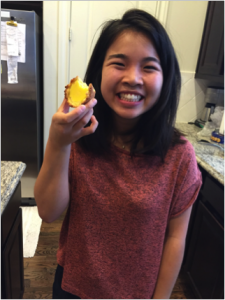
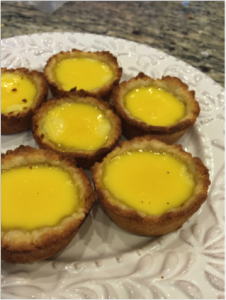
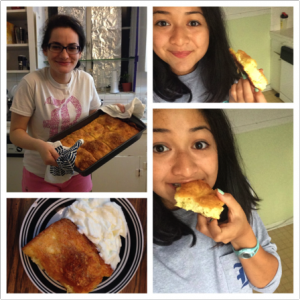
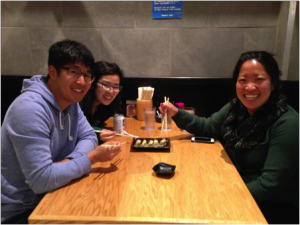
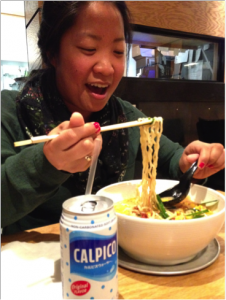
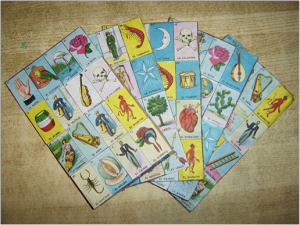
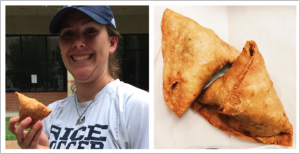
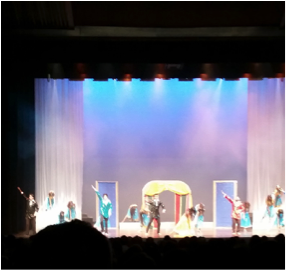
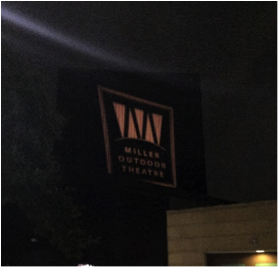
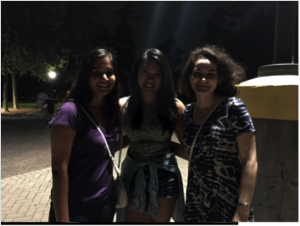
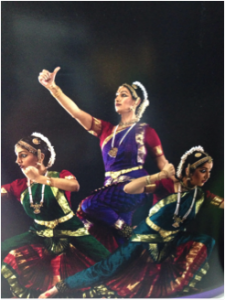
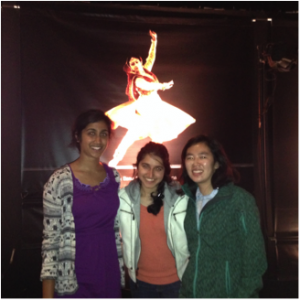

Leave a Reply